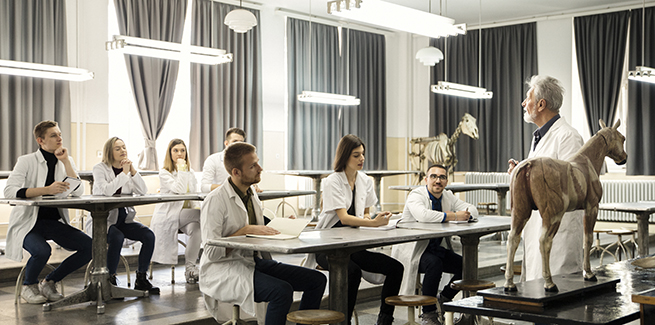New Jersey on tap for new vet school

The Rowan University School of Veterinary Medicine will open in New Jersey in the fall of 2025 with a freshman class of 60 students, bringing the total number of veterinary schools in the US to 34, and representing the first such school in New Jersey.
Last November, the New Jersey State Legislature approved $75 million in funding to get the ball rolling on the new school, but there’s still a lot of work ahead—they still need to actually build the campus in Sewell, New Jersey, which is about 25 miles southeast of Philadelphia. And perhaps most importantly, they’ll need to be accredited by the American Veterinary Medical Association Council on Education.
The school will offer undergraduate, graduate, and doctor of veterinary medicine (DVM) degrees in addition to internship and residency programs.
Matthew Edson, DVM, MICP, MRCVS, dean of the new veterinary school, told NEWStat that the decision was driven by the lack of veterinary education options: “New Jersey students are forced to apply to out-of-state schools. Since schools tend to favor in-state applicants, and with most schools having a higher percentage of in-state students, it makes it more difficult for residents of our state to gain acceptance to a program.”
New Jersey’s gain will be Pennsylvania’s loss.
The Garden State’s first veterinary school will be located just half an hour from Penn Vet, where out-of-state New Jersey students traditionally make up a significant portion of Penn Vet’s student body—30% of the class of 2025 are New Jersey natives paying out-of-state-tuition.
Saving its residents’ money is a big motivation behind New Jersey’s decision to fund an in-state veterinary school. “Out-of-state tuition rates are often substantially more expensive than in-state tuition rates,” Edson said, noting that student debt is a major issue in veterinary medicine. “We’re hoping to help alleviate that for New Jersey residents while keeping talent from our program in the state after graduation.”
Edson said Rowan's veterinary program will be “nontraditional.”
He describes the program as hybrid; Rowan won’t have a large-scale teaching hospital, and they won’t be strictly distributive, or community-based, either: “We’re constructing a smaller-scale small-animal teaching hospital [next to] our preclinical teaching facility on the Rowan College campus.”
He describes it as more like a small-animal referral hospital than a typical veterinary teaching hospital. And, while aspects of the program will be distributive, Rowan hopes to keep the majority of their core clinical rotations in-house. “Our goal for this program is to produce clinically competent, socially capable graduates who feel confidently prepared for entry-level practice at the time of graduation.”
For the class of 2025, that’s still a decade away.
That’s a long time for short-staffed practices to wait, but Edson says supply and demand is always shifting, and that while there might be a desperate shortage of veterinarians right now, that wasn’t always the case: “Ten years ago many people in our industry felt we had too many veterinary schools and not enough jobs for graduates,” he said. “We’re in the opposite situation now, but that doesn’t mean that will always be the case.”
Does that mean demand for veterinarians will go down once the pandemic ends and the “pandemic puppies” phenomenon fades?
“I don’t think anyone can accurately make that prediction,” Edson said. “It’s certainly something we as an industry need to be prepared for.”
Photo credit: © M_a_y_a/E+ via Getty Images



